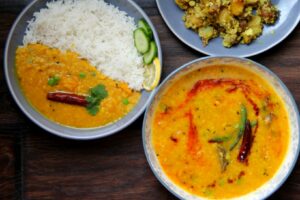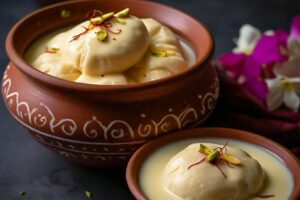Bengali culture offers a vibrant tapestry of flavors that captivate the senses and warm the soul. Nestled in the eastern part of the Indian subcontinent, Bengal is renowned for its rich culinary heritage that blends tradition with a touch of modernity. From the bustling streets of Kolkata to the serene villages along the Ganges, food is an integral part of daily life and festive celebrations.
The essence of Bengali cuisine lies in its diverse ingredients and unique cooking techniques. Freshwater fish, aromatic rice, and an array of spices create mouthwatering dishes that reflect the region’s love for bold flavors. Signature dishes like “machher jhol” (fish curry) and “rosogolla” (syrupy dessert) highlight the region’s penchant for both savory and sweet delights.
Bengali Culture Food

Bengali cuisine reflects the region’s rich cultural tapestry, blending tradition and innovation. Known for its balance of flavors, it employs a variety of spices and ingredients to create an exquisite culinary experience. The cuisine often utilizes mustard oil, panch phoron (a five-spice blend), and locally-sourced produce, creating bold and distinct dishes.
The use of fish is integral to Bengali food culture. Rivers and wetlands supply an abundance of freshwater fish, forming the centerpiece of many meals. Dishes like “machher jhol” exemplify the Bengali approach to cooking, where simple ingredients come together to create depth in flavor. Such recipes often highlight cooking techniques like steaming and frying, producing rich and comforting meals.
Notable in Bengali cuisine is the emphasis on sweets, with rosogolla and sandesh being famous worldwide. These desserts showcase a mastery over dairy transformation, creating light, flavorful treats enjoyed during both everyday meals and special occasions.
Rice occupies a central role in the Bengali diet, often served as the main component of meals. It pairs with an array of lentils, vegetables, and curries, illustrating the harmonious interplay of textures and tastes. This foundation enables endless creativity, embracing diverse cooking styles while maintaining cultural authenticity.
Traditional Bengali Dishes
Bengali cuisine offers a captivating array of traditional dishes that reflect the region’s rich culinary legacy. Here’s a glimpse into its staple grains, iconic curries, and signature sweets.
Staple Grains And Lentils

Rice holds a central place in Bengali meals. It’s not just a dish but a foundation. Typically, steamed rice pairs with rich lentil preparations like “dal” or “bhaja moong dal.” Lentils enrich meals and offer a vital protein source in vegetarian diets. “Khichuri,” a comforting dish of rice and lentils, often accompanies rainy days or religious occasions, offering nourishment and warmth.
Iconic Curries And Stews
Machher jhol, a traditional fish curry, epitomizes Bengali expertise in balancing flavors. Using mustard oil and spices, it delivers depth and complexity. Another delicacy, “chicken kosha,” involves slow cooking techniques to enhance the spices’ infusion. “Shorshe ilish,” showcasing hilsa fish with mustard paste, stands as an embodiment of Bengali gastronomic art.
Signature Sweets

Bengali sweets enjoy global acclaim. Rosogolla, famous for its spongy texture and sweetness, remains a favorite. “Sandesh,” made from fresh paneer, offers a simple yet refined taste. Another delight, “mishti doi,” combines fermented sweet yogurt to perfection. These desserts illustrate Bengali innovation with milk products, celebrating the sweet side of life.
Dining And Eating Habits
Bengali dining customs reflect a deep appreciation for food and community. They typically begin meals by serving rice, the foundation of most dishes. This grain is paired with lentils, vegetables, and a variety of side dishes. Meals often feature multiple courses, with fish being a central element. Each course showcases distinctive flavors and cooking techniques.

Food is traditionally served on a banana leaf or metal plate. People eat with their right hand, using fingers to mix and enjoy the intricate textures. This practice emphasizes the tactile relationship with food and heightens the overall dining experience.
Family and community play vital roles during meals. Sharing food is common, fostering connections and creating a sense of belonging. Festivals provide special occasions for communal dining, where elaborate spreads are enjoyed by families and guests.
Dishes and Traditions
Bengali cuisine is a vibrant tapestry of flavors and traditions that captivates the senses and enriches cultural identity. Its unique blend of ingredients and cooking techniques reflects a deep connection to the land and its history. From the aromatic spices to the delicate sweets, each dish tells a story of tradition and innovation. Bengali food isn’t just about nourishment; it’s a celebration of community and heritage.

